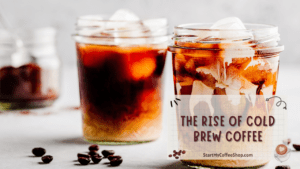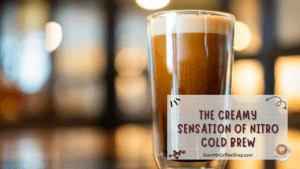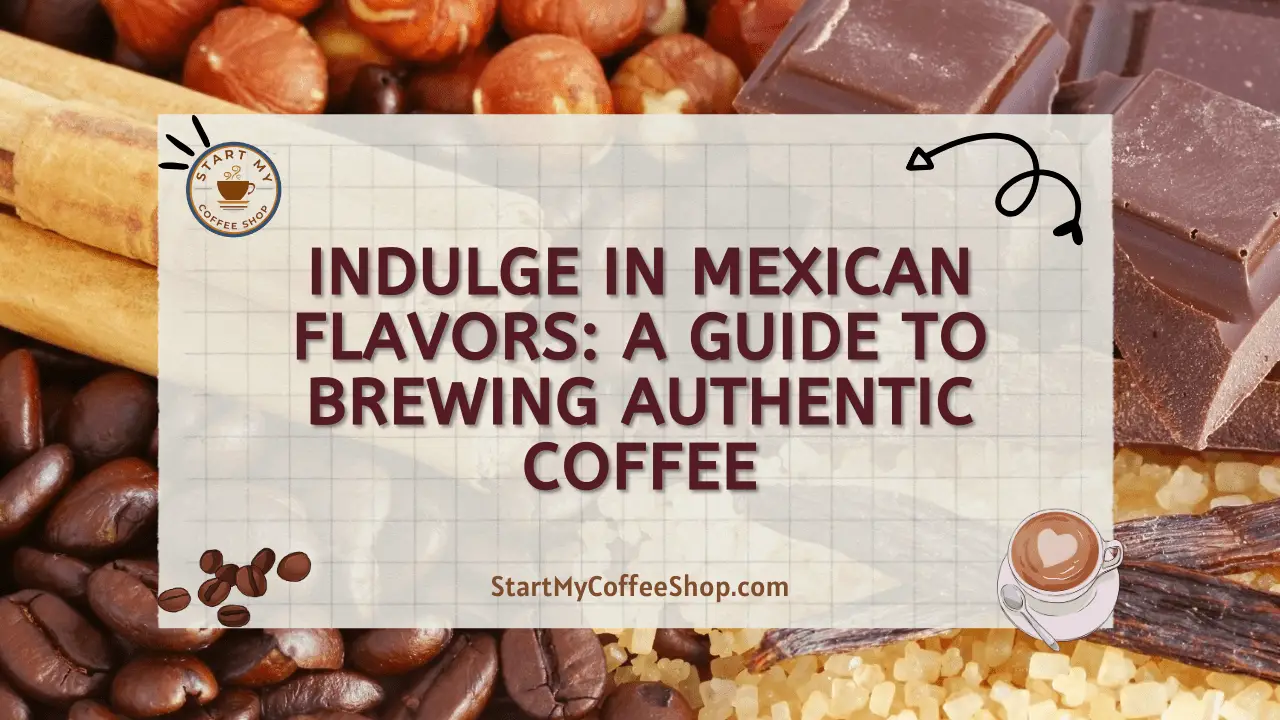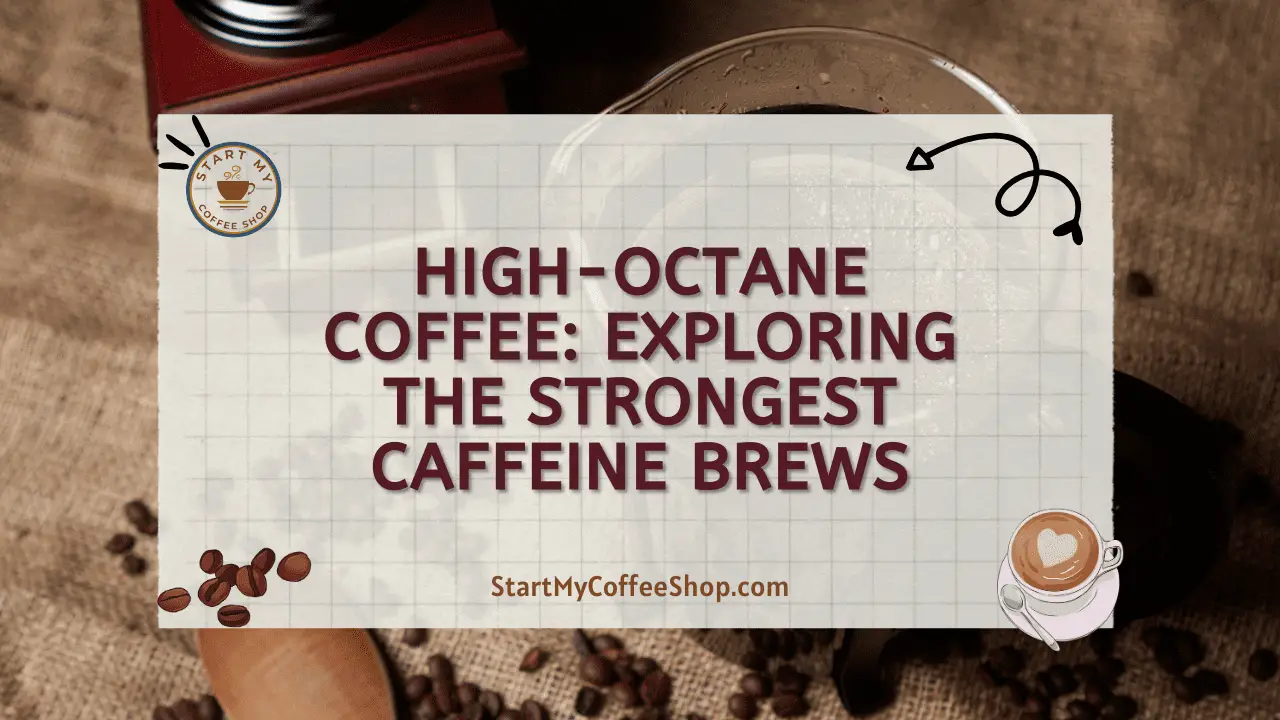Cold brew coffee has become a popular and refreshing alternative to conventional brewing techniques as coffee lovers look for novel and interesting ways to enjoy their favorite brew. Cold brew coffee has swept the coffee world by storm, captivating both seasoned coffee drinkers and beginners alike with a smoother, less acidic flavor profile.
To best savor a multitude of cold brew coffee options, you should delve into styles like Japanese Kyoto-style slow drip, immersion method, and nitro cold brew. These styles offer distinct flavor profiles due to differences in steeping times, water-to-coffee ratios, and nitrogen infusion for a creamy texture.
In this article, we will explore the realm of cold brew coffee, delving into the complexities of these brewing methods and gaining an understanding of how they affect the final flavor profiles.
The Rise of Cold Brew Coffee

A long-standing custom with historical roots, cold brew coffee has recently made a comeback and become a preferred beverage in households and coffee shops all over the world. Although it may appear to be a recent phenomenon, the origins of cold brew can be found in ancient times, when diverse societies created their distinctive varieties of iced coffee.
Cold brewing techniques were popular in the past in places like Japan, the Middle East, and Latin America. For instance, the Japanese Kyoto-style slow drip was developed over decades and offers a methodical and creative approach to cold brewing. A cool coffee beverage known as “qahwa bayda” was popular in the Middle East during the sweltering summer months, exhibiting a variety of cold coffee traditions.
But only recently has cold brew coffee seen a significant comeback, capturing the attention of coffee lovers all over the world. The rise in popularity can be ascribed to its mild flavor profile, which many people find preferable to the occasionally powerful and harsh flavor of hot brewed coffee.
The method of making cold brew distinguishes it from conventional hot brewing techniques. In contrast to the quick extraction made possible by hot water, cold brew depends on a long, careful steeping procedure. Cold water and coarsely ground coffee beans are blended, and the combination is then let to sit for a long time, usually between 12 and 24 hours. This allows the cold water to gently remove the flavor molecules from the coffee, producing a mellower but still wonderfully tasty drink.
Cold brew’s prolonged steeping period enables a more delicate extraction, bringing out the nuances and complexities of the natural flavors of the coffee beans. This slow-brewing method also lessens the acidity of the coffee, producing a smoother, less bitter taste, making it an appealing alternative for people with sensitive stomachs or those who like a kinder cup of joe.
The quality and roast of the coffee bean are also emphasized by the cold brewing procedure. Compared to hot brewing, cold brewing extracts less bitter chemicals, allowing the beans’ more delicate qualities to come through. Because of this, coffee lovers can experiment with various single-origin beans and roast levels to find a range of flavor profiles in their cold brew.
Cold brew coffee has become very popular in contemporary coffee culture as a result of its distinctive flavor and allure. Coffee shops now regularly serve cold brew, both on its own and as part of a wide variety of delectable coffee beverages. Coffee connoisseurs have quickly embraced cold brew makers at home and experimented with the ratios of coffee to water, steeping times, and flavor infusions that they find most enjoyable.
Read more about: How Much Would it Cost to Start a Coffee Shop: Breaking it Down for Entrepreneurs
The Art of Japanese Kyoto-style Slow Drip
The famous and traditional Kyoto-style slow drip method of making cold brew coffee originates from the Japanese city of Kyoto. This method uses a beautiful tower or device that has been expertly made, and its sophisticated design enchants coffee connoisseurs. Cold water softly drops over a meticulously constructed bed of coarsely ground coffee beans throughout the lengthy, deliberate brewing process, gradually infusing the water with the flavor of the coffee.
As the brewing cycle might take several hours, and perhaps even up to a whole day, Kyoto-style slow drip is known for its patient approach. Due to the extended brewing time, the resulting cold brew concentrate is unlike any other, with a distinct and opulent flavor profile.
Kyoto-style slow drip provides for a more profound extraction of the coffee’s complex characteristics because of the prolonged steeping period. A symphony of flavor notes is coaxed out of the coffee grounds with each drop of water, producing a stunningly smooth and sophisticated cold brew.
The final brew produced by Kyoto-style slow drip has a seductive richness, where the natural sweetness of the coffee is emphasized and counterbalanced by delicate floral notes. A cold brew that is noticeably less acidic and kinder to the tongue is produced as a result of the meticulous process, which also decreases the extraction of bitter components.
The Kyoto-style machine’s slow-dripped coffee concentrate contains a vast array of potential uses. Coffee lovers are free to enjoy this concentrate any way they choose, according to their preferences. The intense cold brew is frequently diluted with water or milk to make a more delicate and approachable beverage. Some people enjoy the concentrated flavor, sipping it black and letting the full range of flavors dance on their tongues.
Kyoto-style slow-drip cold brew also makes a fantastic foundation for a variety of coffee-based cocktails. This adaptable concentrate opens doors to a world of creativity and discovery, allowing you to create sophisticated iced lattes and pleasant coffee drinks as well as experiment with cutting-edge flavor infusions.
Immersion Method: Simplicity Meets Complexity
For its ease of use and accessibility, the immersion method of cold brew coffee preparation is a popular option, especially among home brewers. It provides coffee lovers with a simple method to create a pleasant cold brew experience directly in their own homes.
Coarsely ground coffee beans and cold water are put together in a container to make an immersion cold brew, which is let to steep for a long time. The standard steeping period lasts between 12 and 24 hours, during which the cold water carefully draws out the characteristics of the coffee to produce a strong cold brew base.
After the steeping procedure is finished, the wasted coffee grounds are removed from the cold brew concentrate using a filtration technique like using a fine mesh strainer or cheesecloth. This filtration process guarantees that the finished cold brew is smooth, devoid of coffee sediment, and suitable for consumption.
The immersion method produces a cold brew that is strong and full-bodied because of the prolonged steeping time that allows for more complete extraction of flavors. Compared to Kyoto-style slow drip, this type of cold brew has a somewhat more pronounced acidity, which gives the whole flavor profile a nice tang.
One can anticipate an enticing combination of flavor notes when sipping a cup of immersion cold brew. The brew’s depth and complexity are enhanced by the flavor’s powerful extraction, which reveals wonderful undertones of chocolate and caramel. The prolonged steeping imparts a light tanginess that gives the experience a refreshing and energizing touch.
The adaptability of the immersion procedure also includes the cold brew’s ultimate preparation. Coffee lovers are allowed to personalize their cold brew concentrate to fit their tastes. Water can be used to further dilute the intense cold brew, giving it a gentler and more accessible flavor. Alternatives include adding milk or other milk substitutes to make the cold coffee a creamier delight that is both rich and gratifying.
The Creamy Sensation of Nitro Cold Brew

With its unmatched texture and alluring presentation, nitro cold brew has quickly distinguished itself as a prominent member of the cold brew family and won the hearts of coffee enthusiasts. By adopting this novel technique, cold brew coffee is given a silky and creamy mouthfeel that distinguishes it from other types of cold brew.
The cold brew concentrate is kept in a keg for making nitro cold brew, which is subsequently infused with pressured nitrogen. Nitrogen makes a beguiling cascade of bubbles as the coffee is poured from a tap, making the process of pouring into a visual treat.
The addition of nitrogen enhances the cold brew’s flavor experience in addition to its alluring appearance. A creamy draft beer-like beverage that is particularly smooth and decadent is the result of nitrogen’s role in taming any residual acidity.
Read more about: How to Create a Business Plan for a Coffee Shop: An Espresso Blueprint
Understanding the Flavor Profiles
Coffee lovers will find the discovery of these processes to be an intriguing adventure because each cold brew type gives a unique flavor profile. People can select the style that best suits their preferences by being aware of the subtleties of these flavor profiles.
Kyoto-style slow-drip cold brew has a sophisticated flavor with a deep, nuanced flavor and low acidity. The prolonged brewing process lets the coffee’s inherent sweetness come through, while the floral and fruity overtones give the flavor depth.
The immersion approach, on the other hand, results in a bolder and more prominent flavor. A modest acidity that adds a delightful tanginess highlights the flavor profile’s robustness. The immersion method is a fantastic choice for coffee lovers who prefer stronger, more obvious coffee aromas.
Those who like a softer, almost dessert-like coffee taste will enjoy nitro cold brew’s creamy smoothness and low acidity. The cold brew’s natural sweetness is complemented by the velvety mouthfeel that the nitrogen infusion produces, making for a beverage that is both decadent and light.
Experimentation and Customization
The appeal of cold brew coffee is found in its natural adaptability and variety, which offers a wide range of creative options to both coffee businesses and home brewers. A wave of experimentation has swept across the coffee community as interest in cold brew keeps growing, resulting in a variety of unusual variations and flavor infusions.
Innovative thinkers have explored various coffee bean varieties and roasting styles to explore unexplored regions. They can then discover a wide range of flavors, from fruity and floral undertones to rich, chocolatey ones.
Beyond playing around with beans, coffee lovers have explored flavor combinations by adding different spices, fruits, and even alcoholic drinks to their cold brew concoctions. Fruits like berries or citrus offer a refreshing tanginess, while spices like cinnamon, vanilla, or cardamom add a pleasant twist. The use of spirits like rum or whiskey adds a sophisticated touch for those looking for a more spirited experience.
The personal touch gives this experiment its attractiveness. Coffee enthusiasts are urged to follow their palate preferences and create cold brew drinks that suit their unique tastes. With each experimental batch revealing a new aspect of cold brew’s potential, the process develops into a fruitful voyage of discovery.
Frequently Asked Questions

How does cold brew coffee vary from iced coffee, and what is it?
To make cold brew coffee, coarsely ground coffee is steeped in cold water for a lengthy period, typically 12 to 24 hours. A smoother, less acidic brew is produced as a result of the lengthy steeping procedure, which extracts the coffee’s flavors without the use of fire. Contrarily, iced coffee is made by brewing it with hot water and then quickly cooling it down with ice, which frequently results in a somewhat more bitter taste.
How do the flavor profiles of nitro cold brew, immersion method, and Kyoto-style slow drip differ from one another?
Each type of cold brew has its flavor character. Kyoto-style slow-drip cold brew is renowned for its sophisticated flavor, which features rich flavors and subtly sweet undertones. It has a low acidity. Cold brew made with the immersion method provides a stronger, fuller flavor with a touch of tanginess. Nitrogen-infused cold brew has a creamy, velvety taste and mellowed acidity that gives it a dessert-like coffee flavor.
What tools do I need and can I prepare cold brew coffee at home?
Absolutely! Home preparation of cold brew coffee is simple. You’ll need cold water, coarsely ground coffee beans, a pitcher or container, and a filtration technique (such as cheesecloth or fine mesh strainer) to get started. Simply mix the coffee and water, let it steep for 12 to 24 hours in the refrigerator, and then strain the grounds out. The cold brew concentrate can then be diluted to the required strength and customized by adding ice, milk, or sweeteners of your choice.
To learn more on how to start your own coffee shop, check out my startup documents here.
Disclaimer: The information provided by StartMyCoffeeShop.com (“The Site”) is for general informational purposes only. All information on the Site is provided in good faith. However, we make no representation or warranty of any kind, express or implied, regarding the accuracy, adequacy, validity, reliability, availability, or completeness of any information on the Site. Under no circumstance shall we have any liability to you for any loss or damage of any kind incurred as a result of the use of the Site or Reliance on any information provided on the Site. Your use of the Site and reliance on any information on the Site is solely at your own risk. This blog post is for educational purposes only and does not constitute legal advice. Please consult a legal expert to address your specific needs. Terms and Conditions. (https://startmycoffeeshop.com/terms-and-conditions/)

Hi! I’m Shawn Chun
My adventure in coffee began when I first launched my first coffee shop back in the early 2000s. I had to figure out so many things on my own and to make it worse within 2 years of opening two large corporate coffee chains moved in just blocks away from me!
As I saw smaller and even some larger coffee shops in the neighborhood slowly lose customers to these giant coffee chains and slowly close up shop, I knew that I had to start getting creative…or go out of business.
I (like you may be) knew the coffee industry well. I could make the best latte art around and the foam on my caps was the fluffiest you have ever seen. I even had the best state-of-the-art 2 group digital Nuova Simonelli machine money could buy. But I knew that these things alone would not be enough to lure customers away from the name brand established coffee shops.
Eventually, through lots of trial and error as well as perseverance and creativity I did find a way to not only survive but also thrive in the coffee/espresso industry even while those corporate coffee chains stayed put. During those years I learned to adapt and always faced new challenges. It was not always easy, however, in the end, I was the sole survivor independent coffee shop within a 10-mile radius of my location. Just two corporate coffee chains and I were left after that year. All told the corporate coffee chains took down over 15 small independent coffee shops and kiosks and I was the last one standing and thriving.
Along the years I meet others with the same passion for coffee and I quickly learned that it is not only “how good a barista is” that makes a coffee shop successful, but the business side of coffee as well.
Hence why I started this website you are on now. To provide the tools and resources for up and coming coffee shop owners to gain that vital insight and knowledge on how to start a coffee shop successfully.
Stick around, browse through my helpful blog and resources and enjoy your stay! With lots of LATTE LOVE!
Shawn







